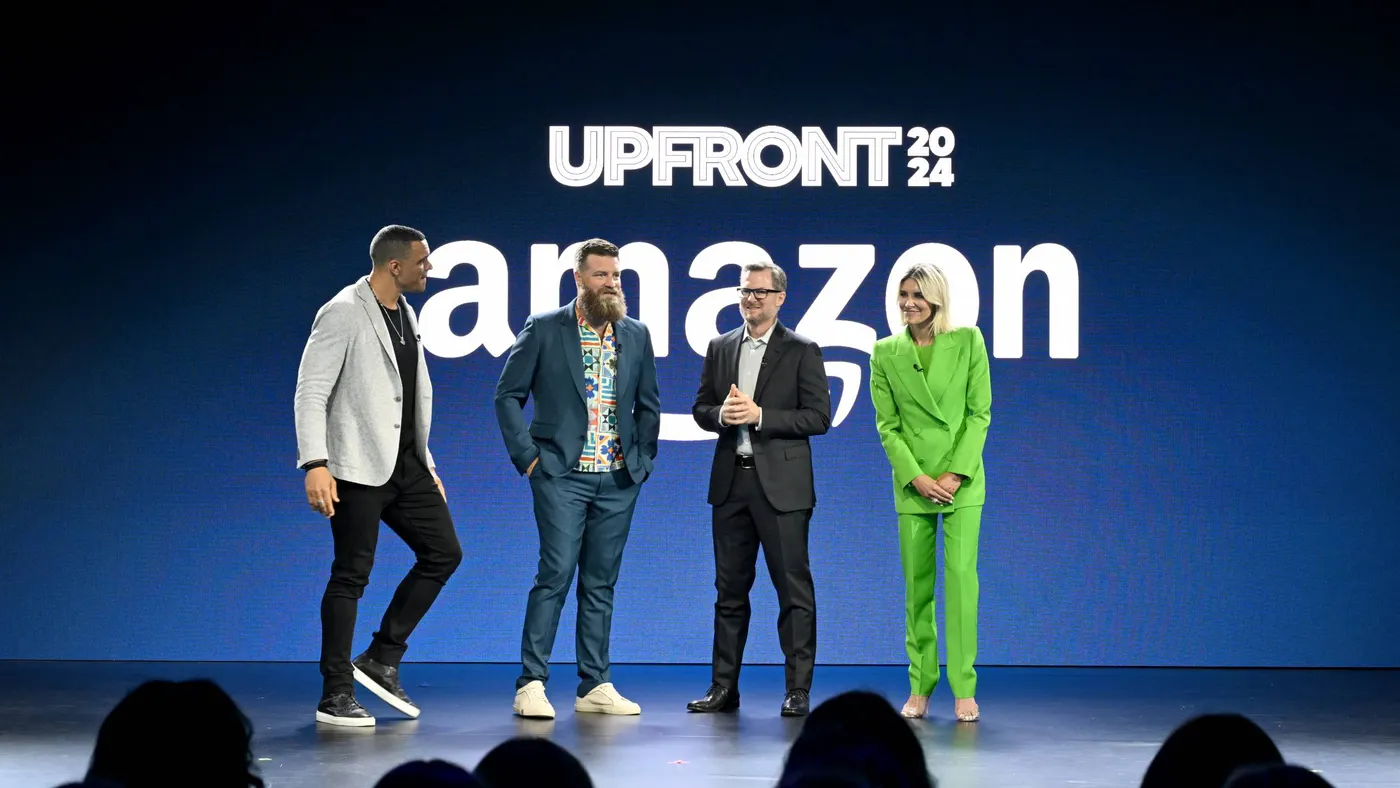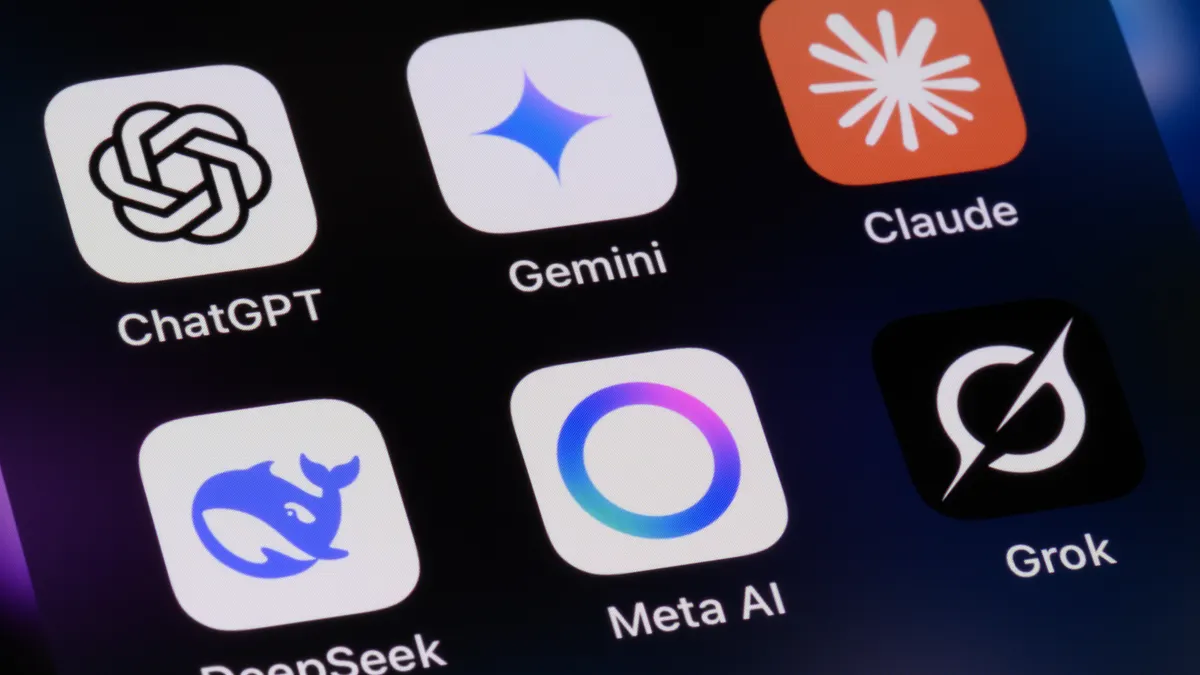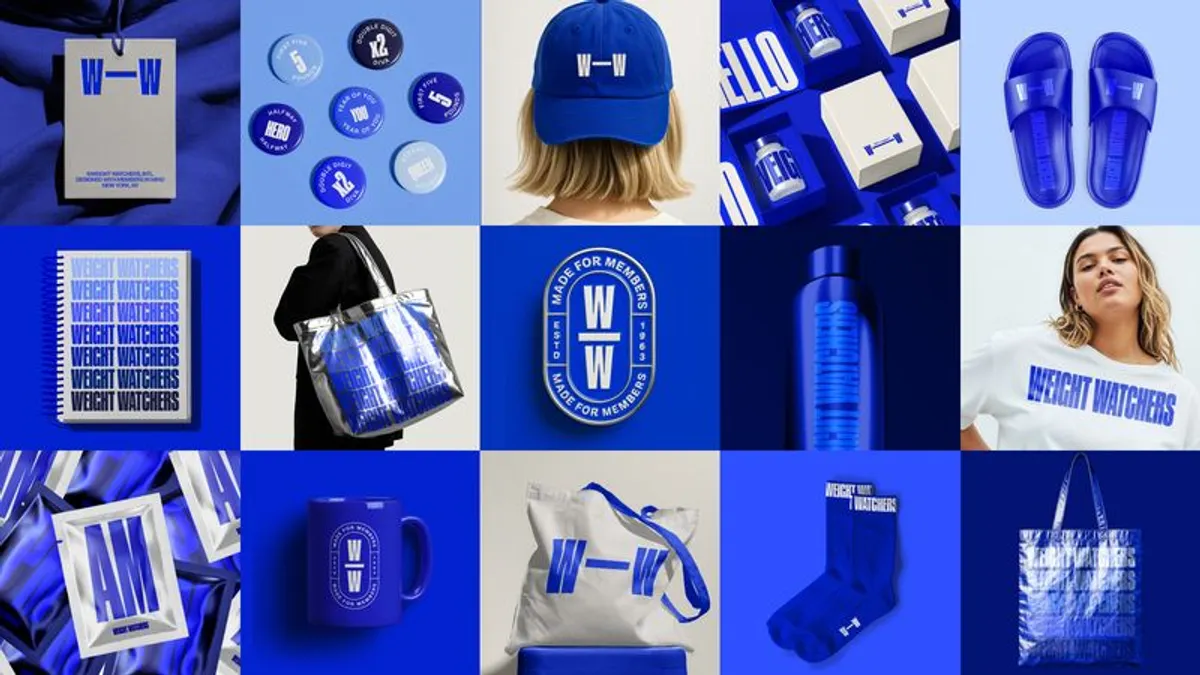As brands enter the thick of the annual season for brokering advertising commitments, also known as the upfronts, many are in a disquietingly familiar state of uncertainty. The Trump administration’s trade war has upended 2025 planning, putting marketers in a holding pattern and potentially pushing more toward cheaper, lower-funnel channels.
The moment presents its distinct set of challenges but in many ways echoes when the COVID-19 pandemic hit five years ago, stopping the world in its tracks and making agility a mandate. However, data demonstrates that marketers did not always move quickly to capitalize on emergent channels during the early 2020s, and the industry’s proclivity for risk aversion may again test whether brands thrive or shrink in a downturn.
“I think that some of what we’re feeling, in our core, is an awful lot like the uncertainty that we felt during the pandemic,” said David Cohen, CEO of the Interactive Advertising Bureau (IAB), in comments kicking of the trade group’s digitally oriented NewFronts showcase Monday. “Now is not the time for fear. Now is not the time for hunkering down and short-termism.”
That said, the media landscape looks significantly different than in March 2020, in no small part thanks to the pandemic-driven acceleration of digital habits. Retail media, a still-nascent term at the turn of the decade, is one of the fastest-growing areas of advertising, propelled by the dual forces of wider e-commerce adoption and the search for alternatives to third-party cookies. The media network model has not only produced hundreds of retailer-owned ad platforms, but also spread to categories including ride-hailing apps, financial services and travel, resulting in oversaturation. Other channels that were already gaining purchase with brands prior to COVID, including streaming and TikTok, have become dominant in culture, though ad spend has sometimes lagged consumer adoption. That could change as premium media properties like live sports finally flock to the digital arena at scale.
CTV and social grow ad stature post-pandemic
Amidst this new channel paradigm, the business of marketing hasn’t achieved the same level of refinement as a TikTok For You page. Fragmentation and opacity are greatly exacerbated in a world where everyone’s online while many companies have lost sight of brand-building fundamentals in the chase for media math mastery.
“Media is more complex than ever,” said Sorin Patilinet, the former senior director of marketing effectiveness and growth sciences at packaged goods giant Mars, over email. “In the past, we had a media manager and a digital manager. Today we have a [manager for] search, retail media, organic media, in addition to the traditional media roles.”
As media sits at another inflection point, with the threat of contraction looming large and antitrust crackdowns priming a shake up, looking to the recent past may be the best way to steel the industry for an uncertain future. Below, Marketing Dive examines the forces that have reshaped media since the pandemic’s outset: What stuck, what flared out and what these channels say about an evolving consumer mindset.
TikTok and the decline of the ‘social graph’
Social media fads come and go, but few apps have altered how people view content on their phones as much as TikTok. The platform made short-form, “snackable” video the norm for both users and advertisers, shifting everything from budgetary priorities to agency assignments. Crucially, it changed how brands interact with culture, with a premium on lo-fi creator content and fast response times to buzz-worthy moments.
“The content production quality has changed in some ways. There used to be so much preparation into a 30-second commercial. Now that window, again, has become really, really short,” said Alison Mayes, managing director of independent media agency Apollo Partners.
TikTok’s addictive For You page was enshrined as a U.S. cultural fixture as the pandemic forced people to stay locked inside while craving a peek at what everyone else was up to. In 2020, the ByteDance-owned offering became the most-downloaded app globally, ushering a transition from a social media ecosystem oriented around what experts termed a social graph — the network of friends and family the user actually knows — to one centered on out-of-network content surfaced by algorithmic recommendations. That step change aligned with more consumers turning to social formats, including ads and sponsored posts, to learn about new products and services, laying important groundwork for a more recent rise in social commerce.
Social media’s brand impact soars while TV commercials dim
It wasn’t long before rivals that were built on the social graph, including Instagram, Snapchat and even LinkedIn, began to crib from TikTok’s model, though few wield the same degree of sway over the crucial Gen Z audience.
“It’s just a stickier product offering. You have more content you can share with more people, that’s more likely to be engaging,” said Ben Allison, executive vice president of media at VaynerMedia.
While TikTok was quick to snap up public mindshare, some advertisers were slow to invest in the channel, a potential response to nascent ad products and wariness over its Chinese ownership, factors that have continued to dog the business.
“TikTok is another environment where we also still struggle when it comes to measurement. They’ve gotten better in recent years, but, when we first launched with TikTok, a lot of it wasn’t measured,” said Mayes. “We can see that stuff now, but it also is in an area that we, as a media planner, crave more accountability as well.”
TikTok represented 3.7% of U.S. social advertising in 2021, or about $2.1 billion. That market share more than doubled the following year, according to estimates from WARC, the start of an upward climb that has extended into today. Facebook, the poster child for the social graph, conversely saw its piece of the pie decline from 65% in 2020 to 49.8% last year, a more than 15 percentage-point drop.
“I would say 2022 or so is when you start to see, okay, [TikTok] is now a consistent line item. Every advertiser was asking about it,” said Allison.
TikTok’s ad spending trails meteoric rise to cultural prominence
TikTok is expected by WARC to secure about $11.8 billion in U.S. ad spending, or 13.5% of total social advertising, this year. Hitting those benchmarks is contingent on the app not getting banned over national-security concerns.
The Trump administration has already twice pushed back a deadline for finding a U.S. backer for the company, effectively putting the ownership question on the backburner, but there may come a time in the near future where a scramble will again be set off again to find an alternative. Even in that case, executives don’t see the TikTok model of short-form, creator-driven video going anywhere, speaking to the lasting impact the app has had on the shape of social media.
“What happens with TikTok in the U.S. is going to be a huge variable but I think the ecosystem is already kind of baked,” said Allison.
CTV’s ascent against linear takes time
As much as stir-crazed people were glued to their phones during the peak of the pandemic, they were also watching a higher volume of TV, though less frequently through linear means. The public health crisis sped up an existing cord-cutting movement and welcomed a proliferation of platforms in the areas of connected TV (CTV), over-the-top video and other forms of streaming.
The uptick in CTV spending has not quite been meteoric, but is gaining substantial traction as premium programming, such as live sports, evolves. Digital video, a segment that includes CTV, is forecast to capture 60% of total video and TV ad spending this year, doubling its share from 2020, according to the IAB.
“From a platform perspective, it is an arms race to acquire rights to quality content and sports,” said Jamie Rubin, chief media officer at 22Squared. “From a consumer perspective, it has become very difficult and very costly to access all of the content that they are interested in being connected to.”
Streamers are standing up more sophisticated ad-tech offerings and sales pitches, with Netflix and Amazon Prime Video among the two largest to ramp up overtures to Madison Avenue. Brands that used to spend as much as 75% of their budgets through conventional upfront agreements are now favoring the flexible digital approach, according to Mayes, along with chasing the promise of superior targeting and analytics. CTV has also welcomed a wider pool of advertisers once priced out of the national linear TV set, including small- and mid-sized brands, with programmatic self-service solutions, the IAB found.
“CTV doesn’t need to be planned on an annual basis. Those are dollars that you’re not committing to a year in advance,” said Mayes. “It is so much more real-time planning versus having this calendar outlook or even a quarterly outlook sometimes feels like a long time now. It’s changed the dynamic of how marketing dollars are tied up, essentially.”
Despite streaming feeling like the new norm, total spend is still not close to matching that of its traditional counterpart. U.S. ad investment in CTV — here including multiple video on demand formats, including FAST channels and subscription services — last year hit $15.6 billion versus nearly $56 billion for linear TV, which retains an older-skewing viewer base and destination viewing occasions like the Super Bowl. However, the audience split may not last for long: EMarketer expects that CTV will finally topple linear spending by 2028.
“Yes, linear TV audiences tend to be older from a macro perspective and CTV audiences tend to be younger,” said Rubin. “The balance is without question shifting from what had previously been linear consumption to now digital, choice-based consumption.”
CTV is still dwarfed by linear — but ad-spending gap is closing
A lingering barrier to buy-in for CTV is measurement. Unlike the ratings monopoly present in linear, which was flawed but generally accepted, CTV has few standardized methods for assessing the effectiveness of campaigns. A highly fragmented landscape will make coming up with agreed-upon benchmarks difficult. Some initiatives, like the cross-measurement solution Aquila, which is backed by the Association of National Advertisers, hold promise in solving the riddle of CTV measurement but remain in their early stages.
“I don’t believe that there is any consistency in how that work is being done across the industry,” said Rubin. “The fact that our industry has been historically anchored to the notion of reach and frequency as pillars of understanding marketing delivery or media delivery and ultimately impact — the fact that we can’t actually measure that in an industry-accepted way today is really mind-boggling.”
Retail media’s gold rush — and uncertain future
Beyond affecting media consumption, the pandemic spurred people to pick up different shopping habits. The closure of physical stores was a pain in the near term but resulted in an influx of e-commerce data that, combined with the deprecation of third-party tracking technology, helped fuel the rise of retail media networks as marketers sought more precise methods of reaching consumers online.
“Starting at that point in time, a lot of the retail-first companies started to build their own retail media networks,” said Alberto Leyes, senior vice president of go-to-market strategy at Guideline. “Obviously that had been thought of in the past, but it accelerated in 2020 as the brick-and-mortar shops were suffering.”
CPG advertiser spend on retail media spiked 93% year over year in 2020, the moment the floodgates opened, according to Guideline data that examines spending from all of the major ad-holding groups as well as a selection of boutique agencies. Retail media has since become the fastest-growing pocket of digital, analysts say, and is seeking its next phase of expansion in the realms of offsite media — or running ads outside of the retailer’s owned properties — and through a convergence with CTV. U.S. advertser investment in retail media is expected by eMarketer to grow 20% this year to $62.35 billion and top $85 billion by 2027.
But eye-popping levels of growth belie the headaches the channel has created. Many brands view retail media buys as a tax imposed on them through larger trade agreements with retail partners that wield power over shelf placement. As in CTV, the sense that retail media networks are walled gardens or “black boxes” that have little incentive to compare notes with rivals is commonplace.
“Their advantage is they have the closed-loop analysis,” said Mayes. “The difficulty is: I want to see which retailer is performing the best. Everyone has a little bit of a different approach of how they’re getting to those analytic numbers.”
As true standardization feels like a pipe dream, many are simply waiting for the other shoe to drop on a retail media landscape with too many networks to meaningfully support. Mirroring past eras of digital platform emergence, power could consolidate among the handful of players with the scale and sophisticated technology to meet large marketers’ needs.
“On the retail media side of things, I think there's going to be an enormous amount of contraction,” said VaynerMedia’s Allison. “Everybody’s coming to market [with] essentially the same type of offering.”
Necessity breeds innovation
A saving grace for retail media in the short term may be Trump’s tariff chaos. Retail media is built around performance channels that marketers tend to lean on in times of belt-tightening. These bets are meant to be low risk and easier to tie to transactions, but the grueling pandemic years demonstrated that many brands lost value due to a nearsighted swing toward performance.
“We’ve seen this happen before during economic downturns like the 2008 recession and the 2020 pandemic, and is already re-emerging with recent tariffs news and stock market volatility, pushing brands towards over indexing on performance-focused tactics,” said Mayes in a follow-up email.
“However, prioritizing short-term performance at the expense of upper-funnel marketing like brand awareness, brand building, connecting with consumers, carries longer-term risk,” she added.
Moments of high pressure may also breed innovation. Marketers have plenty of newer tools to experiment with in their quest for efficiency, including generative artificial intelligence that was not available during the height of the pandemic. And as hectic as the COVID era was, the upshot was 35% growth for digital advertising on the whole, per the IAB.
“We need to remember that change — even massive, unsettling change — isn’t always bad. We need to remember that the digital advertising industry was born from change, and it was born to change,” said the IAB’s Cohen at the NewFronts. “The faster things change, the more disruption is in our world, the more that digital grows.”
Informa, which owns a controlling stake in Informa TechTarget, the publisher behind Marketing Dive, is also invested in WARC. Informa has no influence over Marketing Dive’s coverage.
Chantal Tode contributed additional reporting to this story.
















